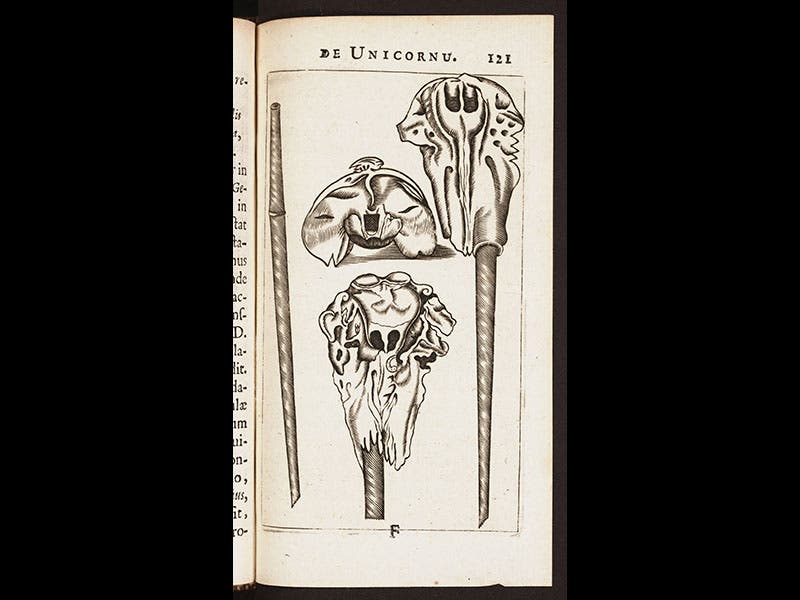Scientist of the Day - Thomas Bartholin






Thomas Bartholin, a Danish physician and naturalist, was born Oct. 20, 1616. Thomas was part of a distinguished family of physicians, including Caspar senior (Thomas's father), and Caspar and Thomas junior (Thomas's sons). Thomas is best known for being the first to write a description of the lymphatic system, but today we feature a rather different kind of book that Thomas first published in 1645, and then reissued, greatly enlarged with the help of his son Caspar, in 1678. The second edition, which we have in our collections, was called De unicornu observationes novae--New Observations about the Unicorn. The book takes a thorough look at all manner of horned animals, indeed at horns of any kind, with a focus on the fabled unicorn. Bartholin is not the first to argue that the unicorn horns that adorned many collections of curiosities were in fact the tusks of Arctic whales called narwhals, but it was his argument, and his picture (second image) that effectively brought the unicorn legend to an end.
Thomas included a discussion of the rhinoceros, accounts of which might have contributed to the unicorn legend, and this gave him an opportunity to reproduce Albrecht Dürer’s well-known woodcut of the Indian rhinoceros—still reigning supreme in zoological literature even after 160 years (first image). Bartholin also provided the reader with a large fold-out engraving of the Horn of Gallehus, a fifth-century artifact crafted of pure gold that had been found in Denmark in 1639 (third image). We are fortunate to have this visual record, since the horn (and a second found in 1734 at the same location) exist no more, having been stolen from the Copenhagen Kunstkammer in 1802 and melted down.
De unicornu begins with a rich allegorical frontispiece, executed by the noted Dutch engraver, Romeyn de Hooghe (fourth image). Our copy of the book happens to be a good-looking duodecimo, bound in vellum, so we decided to include a photograph of the outside of the volume as well (sixth image).
Dr. William B. Ashworth, Jr., Consultant for the History of Science, Linda Hall Library and Associate Professor, Department of History, University of Missouri-Kansas City. Comments or corrections are welcome; please direct to ashworthw@umkc.edu.






